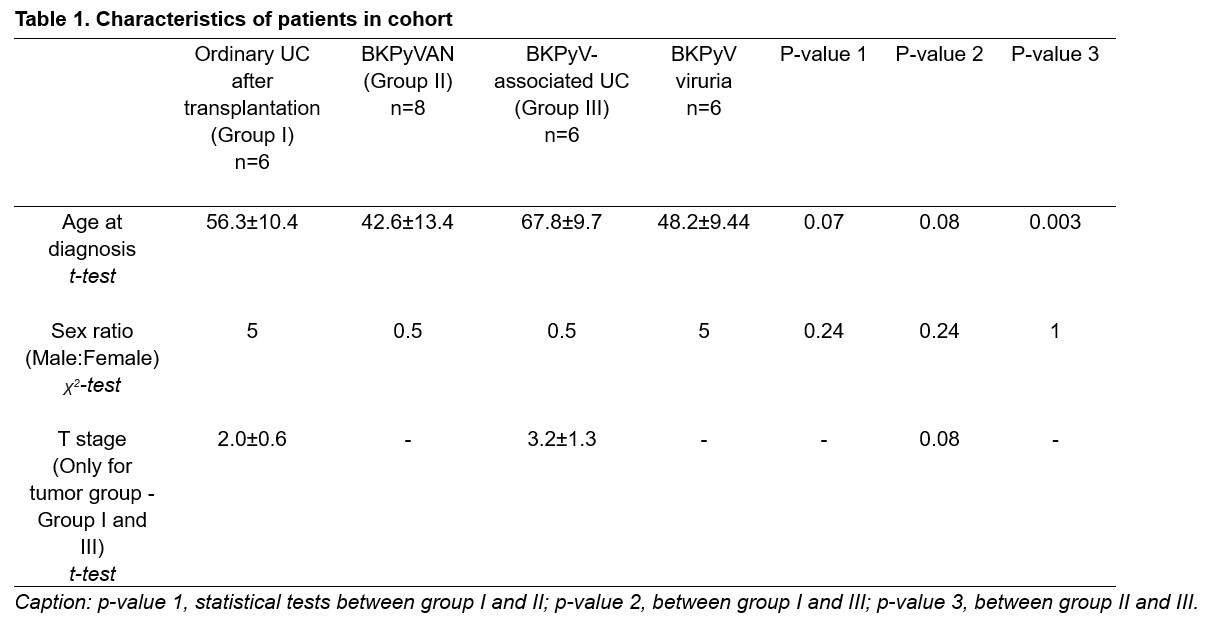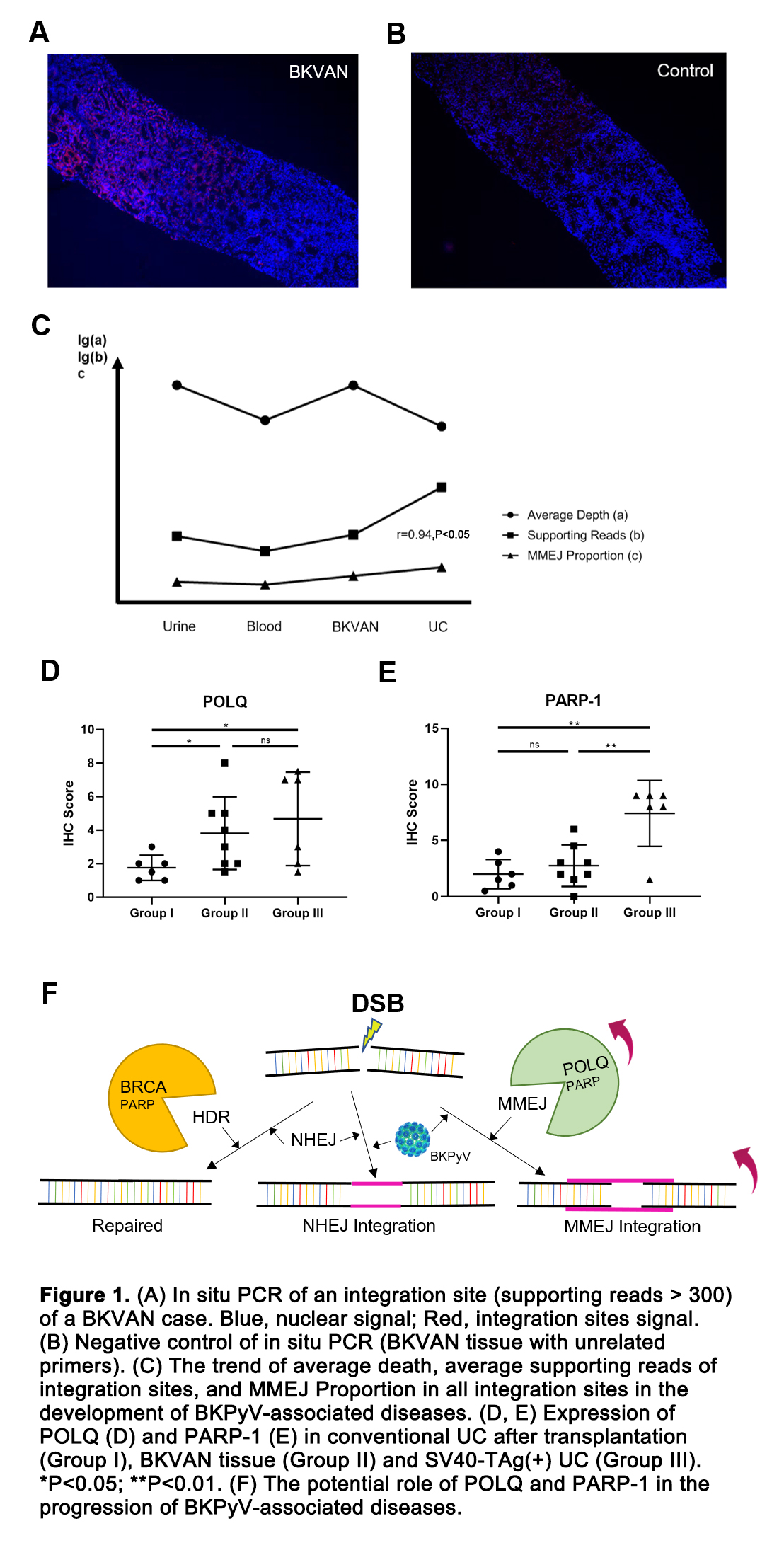Concordance of POLQ and PARP-1 Expression and MMEJ Type Viral Integration in the Progression of BKPyV-Associated Diseases
1Department of Transplantation, Nanfang Hospital, Southern Medical University, Guangzhou, China, 2Department of Microbiology and Infectious Disease Center, School of Basic Medical Sciences, Peking University Health Science Center, Beijing, China, 3Department of Pathology, Nanfang Hospital, Southern Medical University, Guangzhou, China, 4Departments of Urology & Pathology, Massachusetts General Hospital, Harvard Medical School, Boston, MA
Meeting: 2022 American Transplant Congress
Abstract number: 255
Keywords: Infection, Kidney transplantation, Polyma virus
Topic: Clinical Science » Infection Disease » 26 - Kidney: Polyoma
Session Information
Session Name: Kidney: Polyoma Infections
Session Type: Rapid Fire Oral Abstract
Date: Monday, June 6, 2022
Session Time: 3:30pm-5:00pm
 Presentation Time: 4:00pm-4:10pm
Presentation Time: 4:00pm-4:10pm
Location: Hynes Room 309
*Purpose: To reveal the mechanism of the increasing dominant position of integration, especially the microhomology-mediated end joint (MMEJ) form in the development of BK Polyomavirus (BKPyV)-associated diseases after transplantation.
*Methods: Twenty patients with BKPyV-associated diseases were included (Tab.1), six with BKPyV viruria, eight with BKPyV-associated nephropathy (BKVAN) and six with BKPyV-associated urothelial carcinoma (UC). The control group included six patients of conventional UC unrelated to BKPyV after transplantation. Paraffin-embedded tumor and renal biopsy tissues, as well as fresh peripheral blood and urinary sediment were used for DNA extraction and pathological examination. Virome capture sequencing was performed then. In situ PCR was used to verify the integration sites.
*Results: Viral integration sites were detected in all cases (except controls) and those of high supporting reads were validated in paraffin-embedded tissues by in situ PCR (Fig.1A and 1B). Logarithm of the average supporting reading of all integration sites was positively correlated with the proportion of MMEJ ones in all integration sites (r=0.94, P<0.05), as shown in Fig.1C. The expression of POLQ was significantly higher in both BKPyV-associated UC and BKVAN tissue than control group. And PARP-1 was expressed at significantly higher level in BKPyV-associated UC than BKVAN tissue and control group (Fig.1D and 1E).
*Conclusions: POLQ and PARP-1, which have already been proved to be correlated with the alternative pathway for DNA repair, are also closely related to viral integration, especially in the MMEJ form. They are probably involved in the development of BKPyV-associated diseases.
To cite this abstract in AMA style:
Wang Y, Yan Z, Liu Y, Geng J, Deng W, Xia R, Zeng W, Xu J, Wu C, Miao Y. Concordance of POLQ and PARP-1 Expression and MMEJ Type Viral Integration in the Progression of BKPyV-Associated Diseases [abstract]. Am J Transplant. 2022; 22 (suppl 3). https://atcmeetingabstracts.com/abstract/concordance-of-polq-and-parp-1-expression-and-mmej-type-viral-integration-in-the-progression-of-bkpyv-associated-diseases/. Accessed December 18, 2025.« Back to 2022 American Transplant Congress


